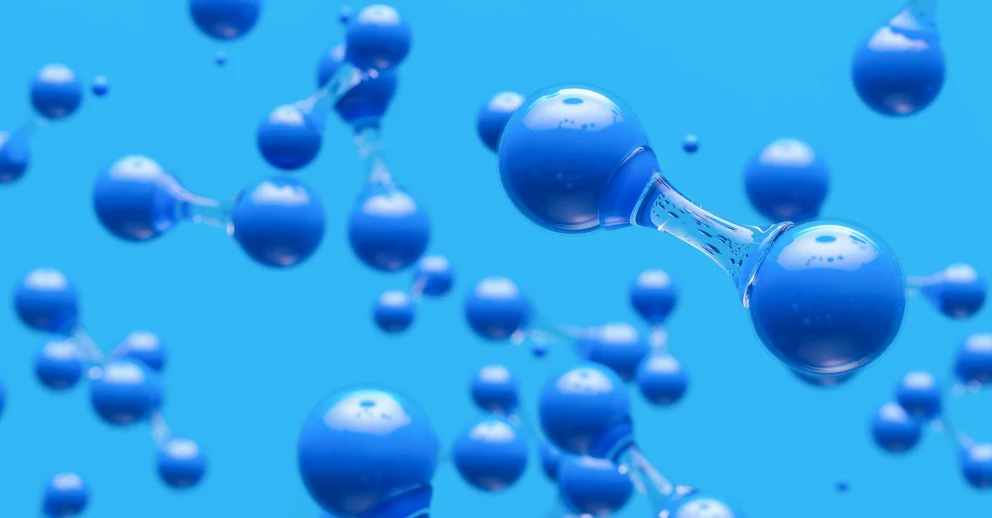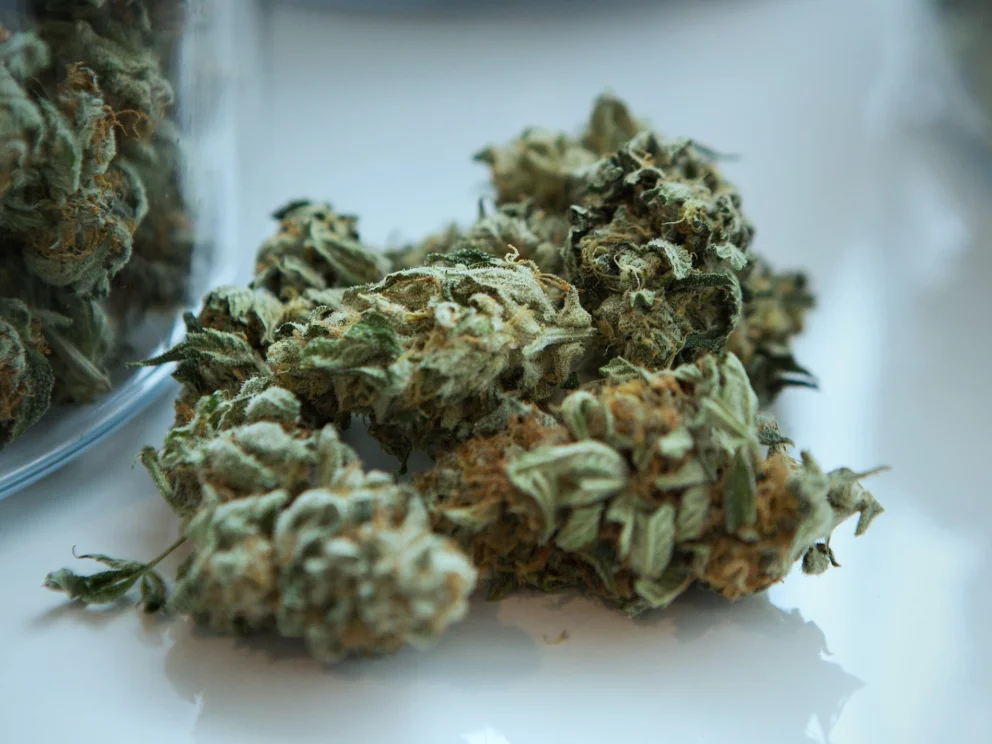
What is the Half-Life of THC & How is THC Metabolized?

Photo by Rafael Classen
By now people know cannabis can get you high because of its THC. The growth of the cannabis industry is expanding our collective understanding of how THC interacts with our body. From tips to extending your high to understanding how long it may linger in your system and pop up on a drug test it doesn’t hurt to understand how you and cannabis connect.
The expanding legalization of cannabis is getting people more interested in the chemical breakdown of cannabis. Exploring its various compounds is leading to new medical discoveries. Understanding how it engages with your body can help you better understand what it’s doing on the biological level.
How is THC metabolized and how is THC processed out of the body? What part of your body processes THC? What is the journey of THC throughout the body?
This might seem like too deep a dive but THC launched the discovery of an entire system of the body: the endocannabinoid system. Cannabinoids in weed mirror compounds in our bodies that turn up and down certain vital body functions. There are hundreds of cannabinoids and terpenes in marijuana that can lead to new potential medical applications.
For those curious about the chemistry of cannabis, there are whole branches of science that examine how substances affect the body: pharmacokinetics and pharmacodynamics. In this article, you’ll dabble in these fields to learn how THC gets metabolized and its journey throughout your body.
What Is The Difference Between Pharmacokinetics And Pharmacodynamics?
Pharmacokinetics examines how the human body interacts with substances from the entire duration of someone’s exposure to it. This branch of science tracks a substance through four stages: the substance’s absorption, its distribution throughout the body, its metabolism into different forms, and excretion from the body.
Essentially, this field covers a substance’s impact on the body from when it enters until when it leaves.
Pharmacodynamics examines the relationship between drugs, their concentrations, and their behavior at their initial site of action. It focuses on how a drug will engage with different receptors throughout the body and the resulting effects.
Pharmacodynamics examines the course of the drug in the body and the intensity of its therapeutic benefits and adverse effects. It will also explore how concentrations can affect these factors.
Pharmacodynamics is more the study of the effects of a drug and its many structural changes while pharmacokinetics focuses on the human body’s reactions and how the body will process a drug.
The Half-Life Of THC
One key factor to understanding a drug is its half-life. The half-life of a substance is the amount of time it takes for its active ingredients to be reduced in your body by half. This can vary by the substance and can be affected by different biological factors.
For example, the half-life of THC can be affected by how often you use cannabis. If you’re a daily smoker who smokes multiple times a day it can linger longer. Also, since cannabis is fat-soluble your body fat can extend its half-life.
The half-life of any substance is important when prescribing medications. For example, the reason you need to take some meds every 8 hours vs. every 12 hours is because of their half-life.
Half-lives are also helpful when considering how a substance might trigger withdrawal symptoms or cause you to develop a dependency. The half-life can also reveal certain metabolites that can be detected by a drug test.
Drug tests don’t test for a drug itself because those can disappear in hours. They test for the chemicals your body creates from having used a drug. Cannabis use can be detected by metabolites in urine, blood, and hair for days or even months after your last time using it.
The half-life of THC for an infrequent user is approximately 1.3 days. For heavy users, the half-life can be anywhere from 5-13 days. The half-life is not the same as testing for your use. It’s more a chemical barometer for how long a drug can exist in some form in your body.
As an organic compound that mirrors our own endocannabinoids, THC can be readily metabolized by our bodies. People with high metabolisms can process THC faster as well. However, its affinity for lipids along with how often people can use cannabis can increase its half-life and how long it can be detected by drug tests.
THC Chemical Structure
The chemical breakdown of Delta-9-tetrahydrocannabinol (THC) is C₂₁H₃₀O₂. If you don’t remember your high school chemistry, it has a chemical makeup of 21 carbon atoms, 30 hydrogen atoms, and 2 oxygen atoms. You can see a 2D and 3D rendition here.
What separates delta-9 and the new somewhat legal versions of THC delta-8 vs. delta-10 is the location of a double carbon bond. All three versions of THC are isomers so they have the same chemical breakdown but a subtly different structure.
With delta-9, the double carbon bond is on the 9th carbon atom in the chain and with delta-8 and delta-10 it’s in the 8th and 10th respectively. This subtle change can affect how they engage with the body and their potency. For example, delta-8 and delta-10 will not get you as high as delta-9.
THC begins as an acid THC-A in the plant. This acid has a different chemical makeup. When exposed to heat, THC-A gets decarboxylated which means that it loses a carboxyl group (COOH). That chemical change makes it psychoactive THC.
Otherwise, THC-A, while still able to be processed by the body and provide anti-inflammatory benefits will not get you high. This is why smoking or the cooking of edibles is required to create this form of THC.
Given THC’s organic makeup it’s easily converted or broken down by our body throughout the metabolization process. Metabolizing can sound like it’s breaking something down into a smaller compound like water (H₂O), after all you think of your body breaking down food into calories.
Metabolism is actually converting a substance into different compounds or chemical structures the body can use in different ways.
How Is THC Metabolized?

Photo by Girl with red hat on Unsplash
THC can be metabolized differently depending on whether it’s smoked or eaten. When cannabis is smoked, the THC-A becomes THC while you’re smoking it. It enters your bloodstream through your lungs. This is why when smoking weed, the high can be almost instantaneous.
The THC and other cannabinoids instantly hit your bloodstream where they can travel to your brain and other body parts and connect to cannabinoid receptors. When cannabinoids engage with these receptors they trigger certain body functions.
For example, THC engages CB1 receptors causing you to get the munchies and develop euphoria. Cannabinoids then migrate to your liver where they get metabolized. There are two phases of metabolism.
In the liver, your body creates versions of THC that are still bioavailable, and one is even psychoactive. Then there’s a second round of metabolism that prepares the THC metabolite for excretion and then it’s removed from your body.
65% of cannabinoids are excreted in your bowel movements and approximately 20% are eliminated in your urine.
Apply for a Medical Marijuana Card Online Today
Join over 100,000 patients who have chosen Green Health Docs as their medical cannabis doctors. We have a 99% approval rate and offer a 100% money back guarantee!
What Organ Processes THC and Where Is THC Metabolized?
THC is metabolized into different molecules by enzymes in your liver. Blood naturally passes through the liver where it regulates your blood sugar levels, clotting, and detoxifies the blood. It does so by converting toxins and other compounds into different forms the body can process or excrete i.e. metabolism.
For THC, the enzymes Cytochrome P450 2C19 (CYP2C) and Cytochrome P450, family 3, subfamily A (CYP3A) in your liver convert THC into two different forms: psychoactive 11-hydroxy-THC (11-OH-THC) and non-psychoactive 11-Nor-9-carboxy-THC (11-COOH-THC).
The enzymes hydroxylate and oxidize the THC which are chemistry terms for adding a hydrogen and oxygen atom to its atomic structure. This small change completely transforms how they engage with the body. For example, 11-hydroxy-THC remains psychoactive and even has a faster onset which can help people with chronic pain issues.
However, the absorption rates for 11-hydroxy-THC are relatively low, and the compound is not easy enough to keep stable outside of using solvents. This is why more people aren’t trying to synthesize 11-hydroxy-THC for sale by the cannabis industry.
The inert 11-Nor-9-carboxy-THC can tend to linger in the body. It is the metabolite that many drug tests check for. It can be stored for over 30 days.
It’s important to note that certain genetic markers can make these enzymes function differently from person to person. This is why cannabis can affect people differently. The reason is that their liver enzymes function slightly differently which changes the concentrations of some of these metabolites.
How Is Edible THC Metabolized?

Now that you have a clearer picture of the metabolism of THC it will be easier to understand the difference between edibles and smoking cannabis. The metabolism process is similar but with edibles there is much more 11-hydroxy-THC.
Unlike smoking which instantly launches THC and cannabinoids into the bloodstream, with edibles digestion needs to happen first. This also means that cannabinoids pass through the liver sooner.
Unlike smoking which launches cannabinoids into the bloodstream, THC must hit the liver from the digestive system. This means that the liver synthesizes more 11-hydroxy-THC from the THC in edibles. While it’s not as bioavailable as THC from smoking it’s been proven in studies to be more powerful.
Studies point to 1 mg of THC in edibles feeling more potent than 1 mg of smoked THC. 11-hydroxy-THC is thought to be 2-3 times more intense. Part of the reason why edibles can affect people differently i.e. more paranoia, higher highs, is the way your body interacts with 11-hydroxy-THC.
11-hydroxy-THC is still psychoactive and bioavailable and can engage with cannabinoid receptors. Over time, it also gets metabolized by the liver and converted into 11-Nor-9-carboxy-THC. The reason drug tests test for 11-Nor-9-carboxy-THC is that it’s the final end product of all cannabis use before excretion.
How Is THC Processed Out Of The Body
After the initial wave of metabolism, whether from smoking or edibles, you end up with 11-hydroxy-THC and 11-Nor-9-carboxy-THC. Eventually the 11-hydroxy-THC is converted into 11-Nor-9-carboxy-THC.
The second phase of THC metabolism, also in the liver, is the preparation of 11-Nor-9-carboxy-THC for excretion. UGT enzymes (UDP-glucuronosyltransferases) add a glucuronide molecule to 11-Nor-9-carboxy-THC creating a THC-COOH-glucuronide molecule.
This is a standard process in the liver that detoxifies the blood. Our liver adds these molecules to toxins to prepare them for excretion either through urination or defecation. That being said, there can still be some 11-Nor-9-carboxy-THC molecules that have bonded to your fat cells that get slowly metabolized over time and then excreted by this same process.
Final Thoughts
As a natural substance, cannabis has a fascinating engagement with our body. It not only expanded our understanding of the endocannabinoid system, it’s helping launch a whole new approach to plant medicine.
Understanding how your body metabolizes THC is just as important as understanding how your body digests food or processes water. Hopefully, as destigmatization of marijuana spreads worldwide more people can more closely engage with cannabis.
Before you engage with cannabis, consider applying online for a medical marijuana card. This will ensure you have access to the countless benefits of cannabinoids and can see firsthand how they work for your body.
 This article has been reviewed by Dr. Anand Dugar, an anesthesiologist, pain medicine physician and the founder of Green Health Docs. Graduating from medical school in 2004 and residency in 2008, Dr. Dugar has been a licensed physician for almost 20 years and has been leading the push for medical cannabis nationwide.
This article has been reviewed by Dr. Anand Dugar, an anesthesiologist, pain medicine physician and the founder of Green Health Docs. Graduating from medical school in 2004 and residency in 2008, Dr. Dugar has been a licensed physician for almost 20 years and has been leading the push for medical cannabis nationwide.
